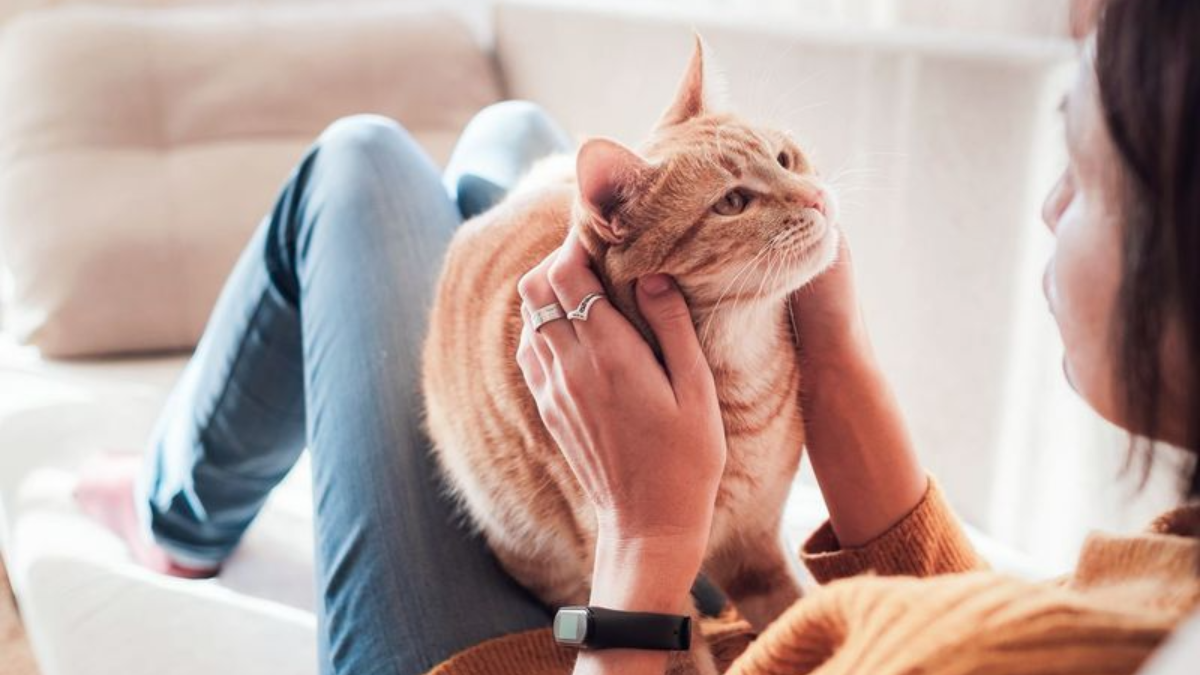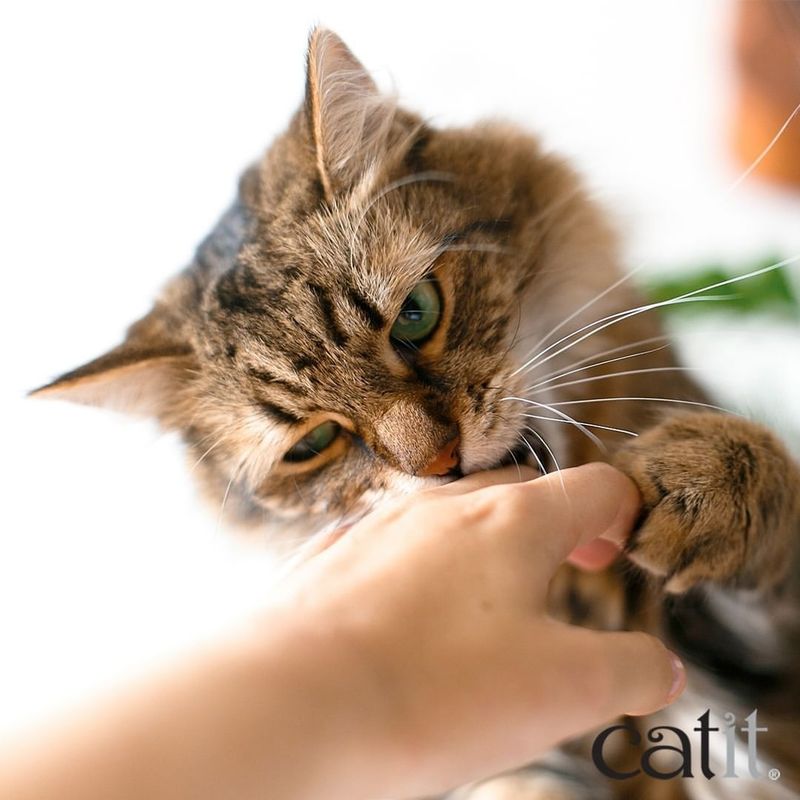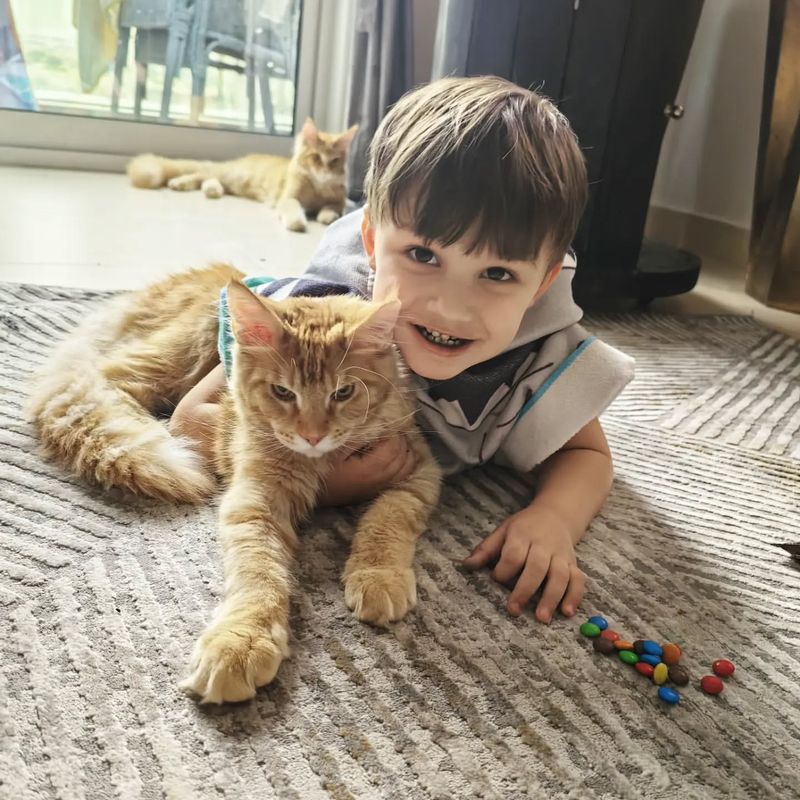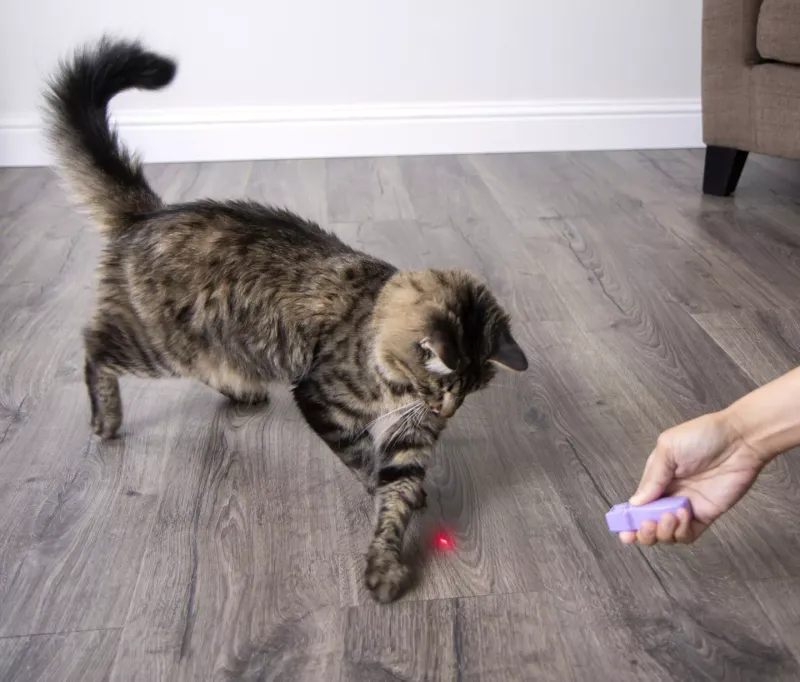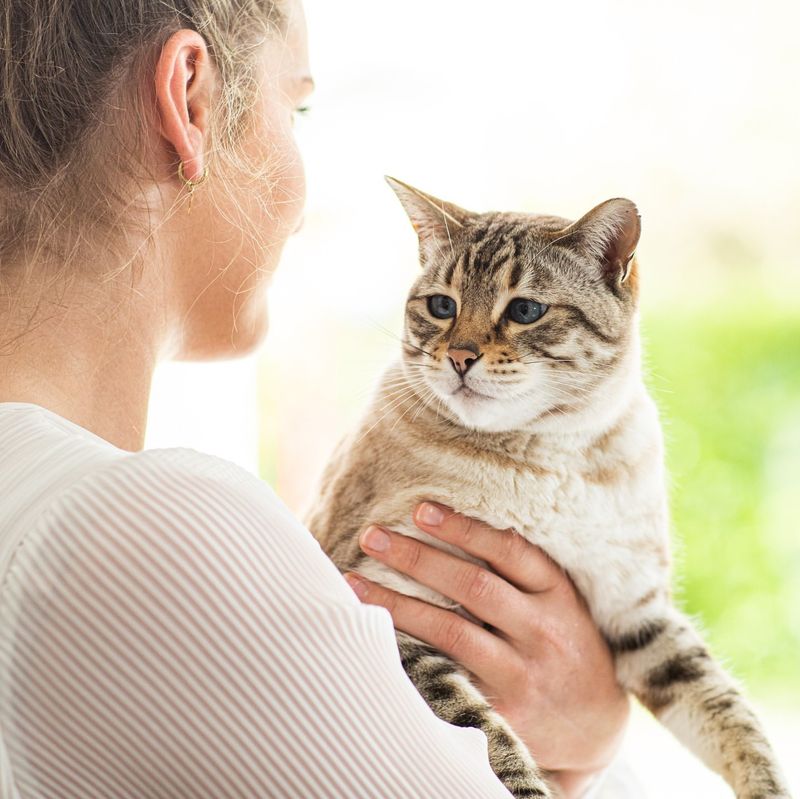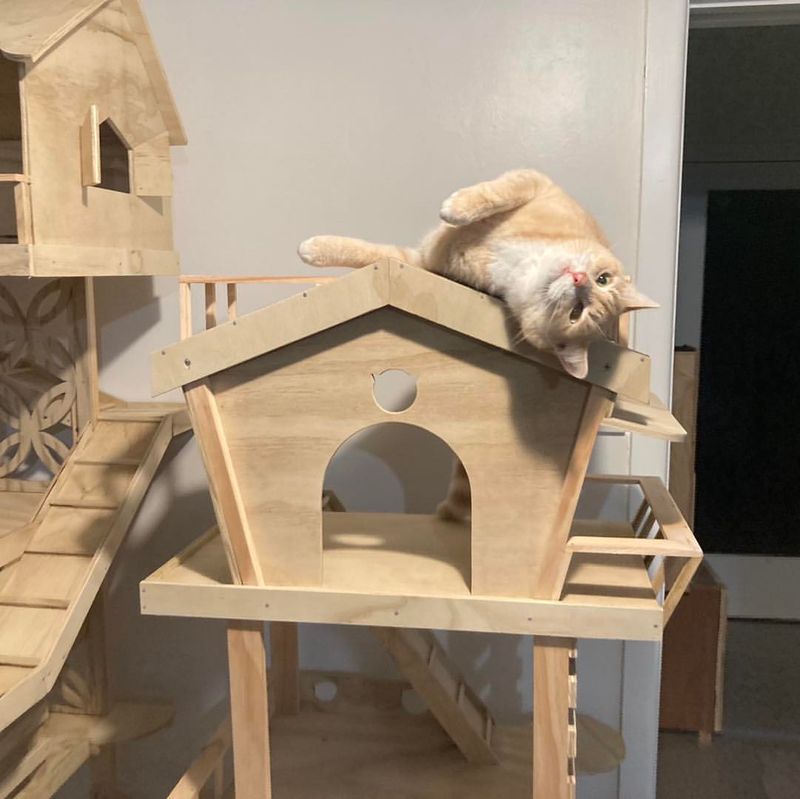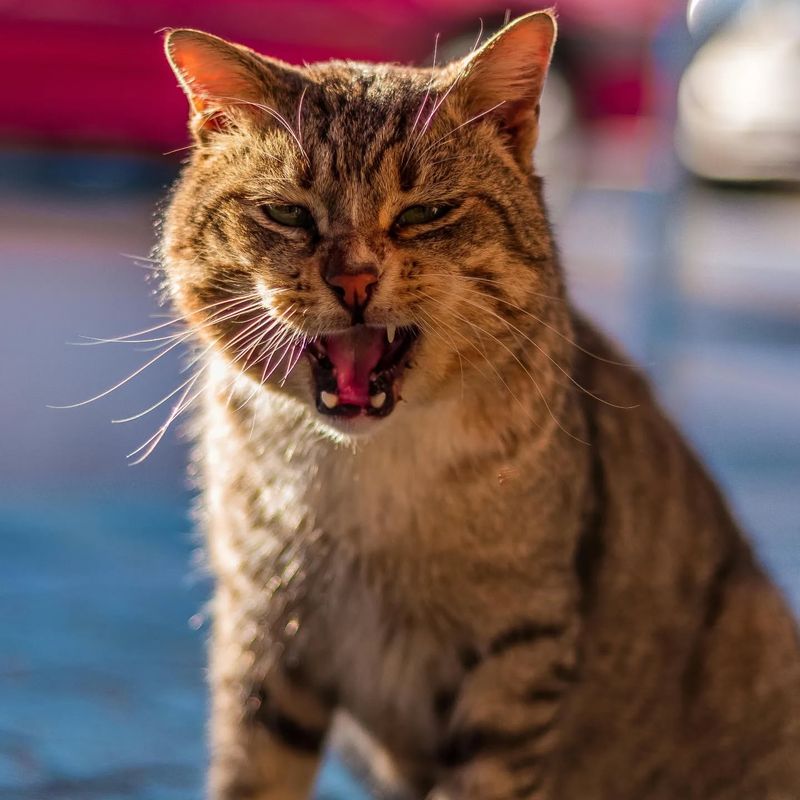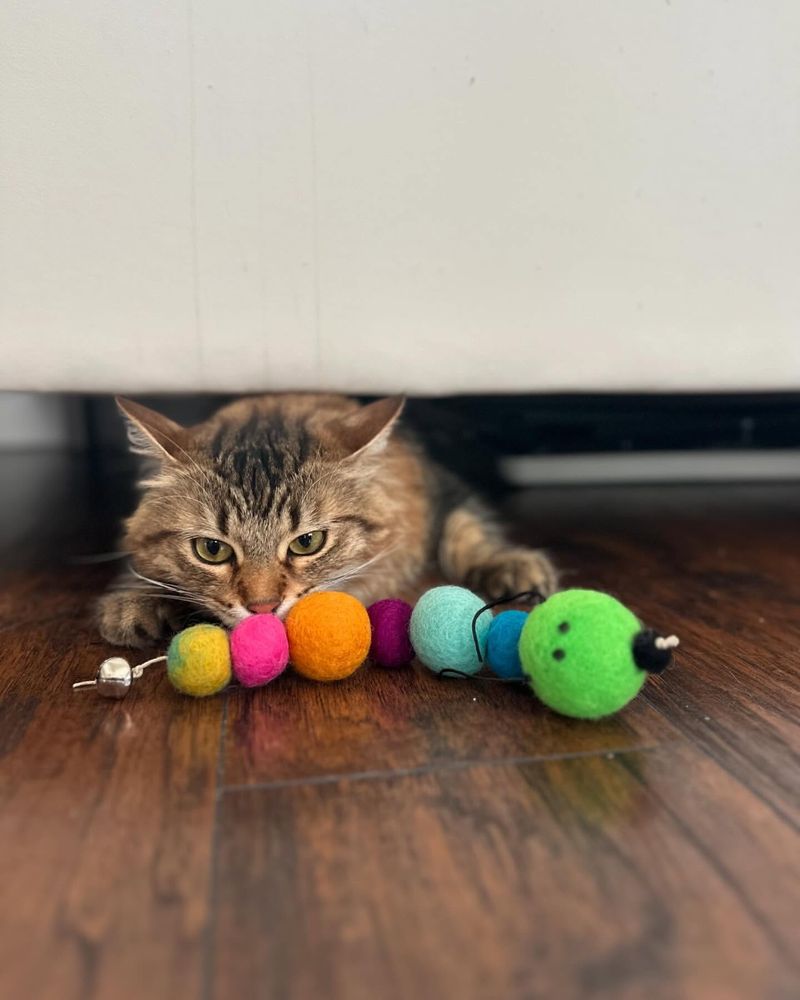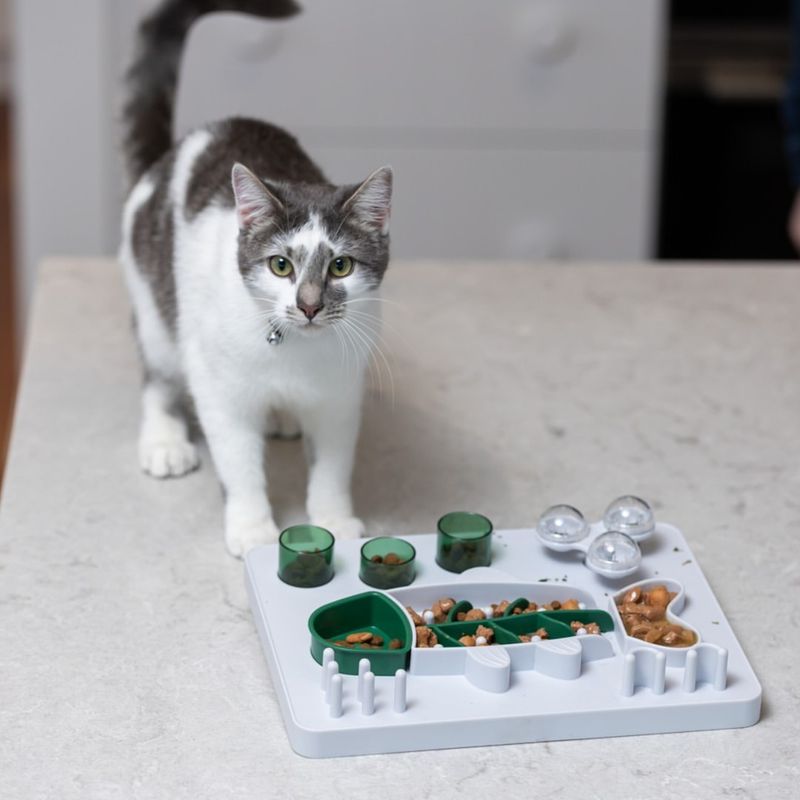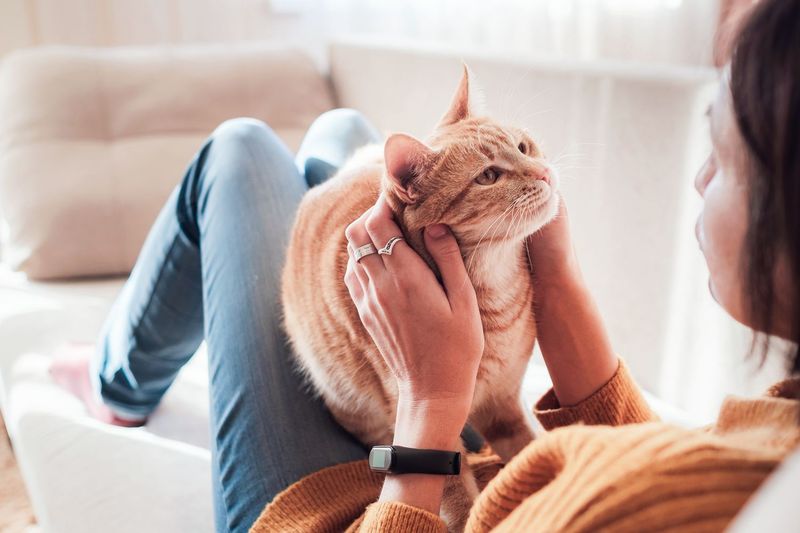📖 Table of Content:
- 1. Use Your Hands as Toys
- 2. Ignore Signs of Overstimulation
- 3. Use Small Objects That Can Be Swallowed
- 4. Tease with Lasers
- 5. Force Interaction When They’re Not Interested
- 6. Play in Hazardous Areas
- 7. Allow Aggressive Play
- 8. Use Toys with Loose Parts
- 9. Neglect Mental Stimulation
- 10. Shout or Scold During Play
Playing with your cat isn’t just about keeping them entertained—it’s about survival. Yours, mostly. Because if you’ve ever dared to wiggle your fingers like a worm or snatched a toy away too soon, you know that feline justice is swift and unforgiving.
Cats may be tiny, but they have the reflexes of a ninja, the patience of a seasoned hunter, and a memory like an elephant—especially when it comes to your mistakes.
But fear not! Whether you’re a seasoned cat parent or new to the chaotic world of feline fun, there are a few golden rules to follow (and a few major blunders to avoid) if you want to keep your hands scratch-free and your cat happy.
So, before you reach for that feather wand or decide to roughhouse like you’re wrestling a tiger, let’s talk about the 10 things you should never do while playing with your cat.
1. Use Your Hands as Toys
Many cat owners make the mistake of using their hands as toys, thinking it’s harmless fun. However, this practice can lead to behavioral problems. Cats have a natural hunting instinct, and if they learn that hands are play targets, they might scratch or bite unintentionally.
Using hands as toys can lead to injuries and create a fear or dislike of handling, making it problematic for grooming or vet visits. Always use proper cat toys. A wand toy or a feather teaser can shift the attention from your hands to safer play objects.
Introduce toys that mimic prey to engage their hunting instincts safely. This not only prevents scratching but also enriches their playtime. Remember, the goal is fun, not fear or injury. Consistency is key to teaching your cat that hands are for petting, not playing.
2. Ignore Signs of Overstimulation
Cats can become overstimulated during play, showing signs like dilated pupils, rapid tail flicking, and flattened ears. Ignoring these signs can lead to sudden aggressive behavior. Understanding your cat’s body language is crucial to avoid bites or scratches.
When a cat is overstimulated, it needs a break to calm down. Continuing to play might seem fun, but it can result in heightened stress and aggression. Always be observant and ready to pause the game when needed.
Offering a quiet space for your cat to relax helps in easing overstimulation. Recognizing these signs not only protects you but also helps in building a trusting relationship with your pet. Remember that each cat is different, so learning their specific cues is important.
3. Use Small Objects That Can Be Swallowed
It’s vital to ensure that the toys you provide cannot be swallowed. Small objects like buttons or beads might seem intriguing to a curious cat but pose a serious choking hazard. Always supervise playtime if such items are present.
Cats are naturally curious and might ingest small items accidentally during play. This not only poses a choking risk but can also lead to gastrointestinal blockages, requiring emergency veterinary care. Choose toys that are too large to swallow and made from safe materials.
Inspect toys regularly for wear and tear. Even a large toy can become dangerous if it breaks into smaller parts. Prioritizing safety by removing or replacing faulty toys ensures a safer play environment. Always err on the side of caution when it comes to the size and safety of play objects.
4. Tease with Lasers
Laser pointers can be entertaining but may lead to frustration. Cats chase the elusive dot without ever being able to catch it, which can be mentally exhausting. The unpredictable nature of a laser can lead to obsessive behaviors.
If you choose to use a laser pointer, end the play session by directing the laser towards a tangible toy. This gives the cat a sense of closure and accomplishment. The key is to ensure that play remains satisfying and not just an endless chase.
Remember, variety is important. Incorporate different types of toys to maintain your cat’s interest and wellbeing. Mix laser play with other interactive toys to prevent frustration. Ensuring your cat feels rewarded after play is crucial for its mental health. Balance is essential for healthy play sessions.
5. Force Interaction When They’re Not Interested
Cats, like people, have moods and might not always be in the mood to play. Forcing interaction when your cat shows disinterest can harm the trust and bond you share. Respect their wishes to rest or observe quietly.
Understanding your cat’s signals is vital. If they walk away or ignore toys, it’s a clear sign they aren’t interested. Pushing for play can lead to stress and can affect their willingness to engage in the future.
Provide opportunities for play but let the cat decide when to participate. This respect fosters a trusting relationship, where the cat feels secure. Balancing active play with peaceful time ensures a happier, healthier pet. Your patience and understanding will be rewarded with a cat that engages more willingly and happily.
6. Play in Hazardous Areas
Cats are agile and curious, but playing in hazardous areas can lead to accidents. Spaces with fragile objects, open windows, or high shelves are risky. Ensure the play area is free from potential dangers to keep your cat safe.
An environment with lots of distractions or dangers can cause injury to both the cat and their human companion. Secure any loose or breakable items and opt for a controlled space where the cat can play freely without worry.
Providing a designated play area with safe toys encourages healthy play habits. Supervised play not only keeps your cat safe but also strengthens your bond. Remember, prevention is key to avoiding accidents. A safe environment is crucial for enjoyable playtime.
7. Allow Aggressive Play
Encouraging aggressive play can result in a cat that bites or scratches too hard. While it might seem natural, allowing your cat to play aggressively without correction might lead to behavioral issues.
Cats need to learn boundaries during play. If your cat begins to bite or scratch too hard, redirect them to a toy. This teaches them that gentle play is rewarded, and aggressive play is not tolerated.
Using toys that encourage gentle play, like feather teasers or soft plush toys, can help correct aggressive tendencies. Consistency in response is important; always discourage overly aggressive behavior. This not only ensures your safety but also promotes a harmonious living environment.
8. Use Toys with Loose Parts
Toys with loose parts can be dangerous. Cats might chew and swallow these parts, leading to choking or digestive blockages. Always inspect toys before and after play to ensure they are intact and safe.
Loose strings, small bells, or detachable pieces should be avoided. These can easily become detached and pose a significant risk. Choose toys that are well-constructed and durable for your pet’s safety.
Regularly check toys for wear and tear, and replace them if necessary. Ensuring all toys are safe and secure provides peace of mind and allows for worry-free playtime. A proactive approach in selecting and maintaining toys safeguards your cat’s health.
9. Neglect Mental Stimulation
Physical play is important, but mental stimulation is equally crucial for a cat’s wellbeing. Neglecting this aspect can lead to boredom and even depression. Incorporate puzzle toys that challenge your cat mentally.
Interactive play encourages your cat to think, problem-solve, and stay engaged. Toys that dispense treats or require some thought to operate can be exciting for your pet. These toys fulfill their instinctual need to hunt and explore.
Switching up toys frequently keeps playtime fresh and exciting. A mentally stimulated cat is happier and healthier. Incorporate variety and challenge into your play routine to maintain your cat’s interest and overall wellbeing. Engaging your cat’s mind is as important as engaging their body.
10. Shout or Scold During Play
Cats don’t respond well to shouting or scolding, especially during play. This can create fear or anxiety and damage the bond you have with your pet. Cats are sensitive creatures and respond better to positive reinforcement.
If your cat misbehaves, redirect them with a toy instead of scolding. Positive reinforcement encourages good behavior far more effectively than punishment. Use treats or affection to reward desired behaviors during play.
Maintaining a calm and encouraging atmosphere helps build trust and respect. Your cat will be more likely to engage in play and respond positively to training. Remember, patience and gentle guidance are key to nurturing a happy relationship with your feline friend.
